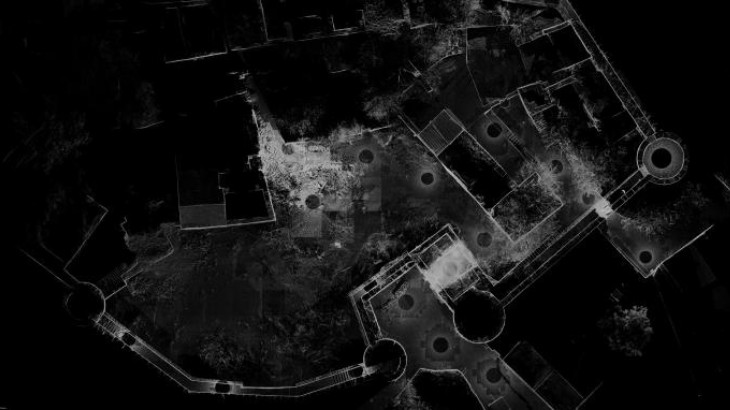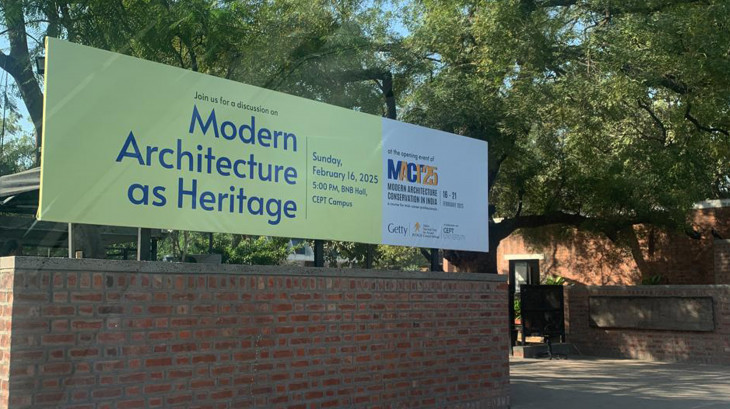
3D for Heritage India

Project details
2021 - ongoing
Research
CHC
Read more on the Project's Website Project Leaflet
CHC will be showcasing the project work and the potential of 3D Laser Scanning through an exhibition and seminar on 20th, November 2021, at CRDF, Ahmedabad. Join the live link.
In response to the persistent challenges facing post-earthquake housing reconstruction of heritage areas, such as rapid damage assessment, buildings’ replacement and replica-leading to displaced population and heritage loss, the project will develop a novel approach using state-of-the-art LiDAR technologies. It is a fast, affordable and scalable method to break the unsustainable cycle of buildings’ replacement and subsequent heritage erasure. The aim is to build future resilience and local capacity of seismic-prone heritage areas of India by offering a digital platform to enable the design of mitigation and re-construction plans, damage and technical assessments, enhancing the re-use and repair of housing and virtually preserving its culture embedded as the record of ‘living heritage’.

Despite the recurrence of earthquakes, responses are usually triggered afterwards, lacking mitigation strategies to diminish risks. Damaged dwellings cannot be immediately reinforced to continue inhabitation; generating disruption. Repairs are usually costly and large numbers of affected constructions make damage assessment difficult, leading to slow and sometimes out-of-context responses. After earthquakes, heritage is not often a priority and is usually left in stand-by mode until specific solutions are developed. This may take several years, as occurred with the historic centre of L’Aquila after the 2009 earthquake; the heritage area of Amandola after the 2016 earthquake – both in Italy; or Zúñiga after the 2010 earthquake in Chile. In India, after the 1993 and 2001 earthquakes, some heritage villages were destroyed and their population was relocated (Jigyasu 2002), implying the forced displacement of people and communities.
Through this research project, we will address heritage conservation and humanitarian response by developing a sustainable method named as re-construction (Devilat 2013), in historical villages in the seismic region of Gujarat, India. By bringing past insights from her previous research experience of post-earthquake strategies for Chilean heritage areas, the aim is to exploit new uses of technology to enhance the number and quality of buildings conserved, mitigate future risks to buildings and human lives, and further impact public policies.
.jpg)
The research team is based at the Centre for Architecture, Urbanism and Global Heritage (CAUGH), at Nottingham Trent University, in collaboration with international and local partners. As Principal Investigator, Dr Bernadette Devilat, part of the CAUGH, who provides her expertise on technology and re-construction of heritage areas. As Co-Investigator, Prof Mohamed Gamal Abdelmonem, Director of the CAUGH, who contributes with his extensive research experience on virtual heritage. As Co-Investigator, Dr Jigna Desai, Executive Director of the Center for Heritage Conservation (CHC), CEPT Research and Development Foundation (CRDF) in Ahmedabad, who contributes with her knowledge of Indian heritage and local networks. As Co-Investigator, Dr Rohit Jigyasu, Project Manager Urban Heritage, Climate Change & Disaster Risk Management from ICCROM, who contributes with his Indian earthquake’s expertise and international heritage scope. Dr Felipe Lanuza is the project’s Research Fellow from the CAUGH, who contributes with his experience related to urban heritage at risk of disappearance. Finally, the Hunnarshala Foundation as a Project Partner in India supports with community participation, networks and local knowledge.
Publications generated through this project
Double-blind peer-reviewed conference proceeding
2021: Devilat, B., Jigyasu, R., Desai, J. Abdelmonem, G, Lanuza, F and Mane, M. In: WIT Transactions on The Built Environment. Volume 203, PI. STREMAH 2021 Conference. Published in WIT Transactions. Pp. 185-197. Open Access. Scopus Index.
Triple-blind peer-reviewed Book chapter
2021: Devilat B. In: Shehade M., Stylianou-Lambert T. (eds) Emerging Technologies and the Digital Transformation of Museums and Heritage Sites. RISE IMET 2021. Communications in Computer and Information Science, vol 1432. Pp. 347-369. Springer, Cham. ISBN: 978-3-030-83646-7
This project has been funded by the UKRI Arts and Humanities Research Council (AHRC) and the Department for Digital, Culture, Media and Sport (DCMS). Project Reference: AH/V00638X/1. More details here
More Projects from CHC

